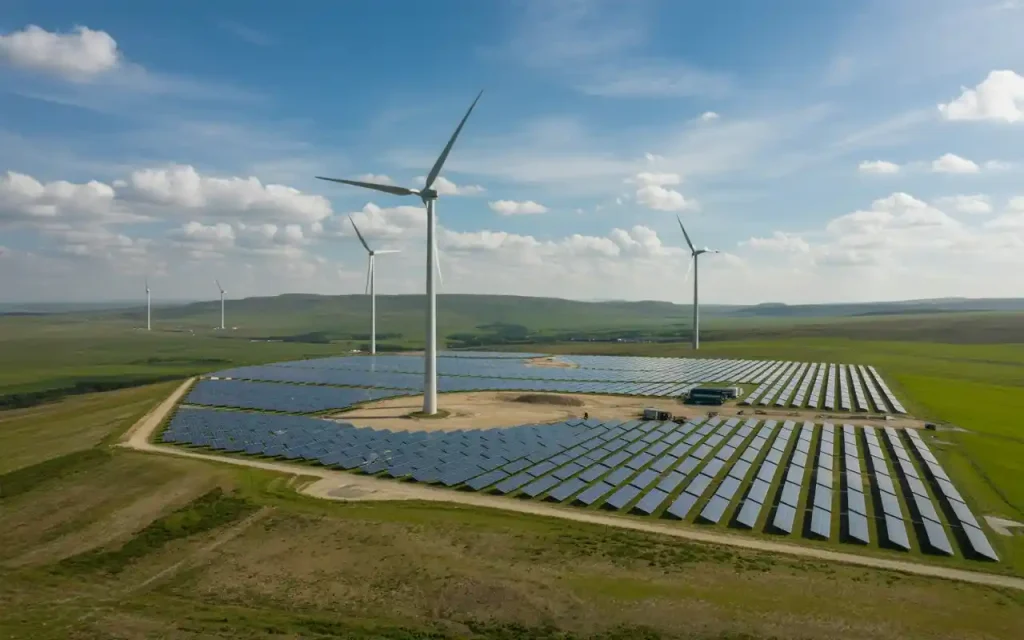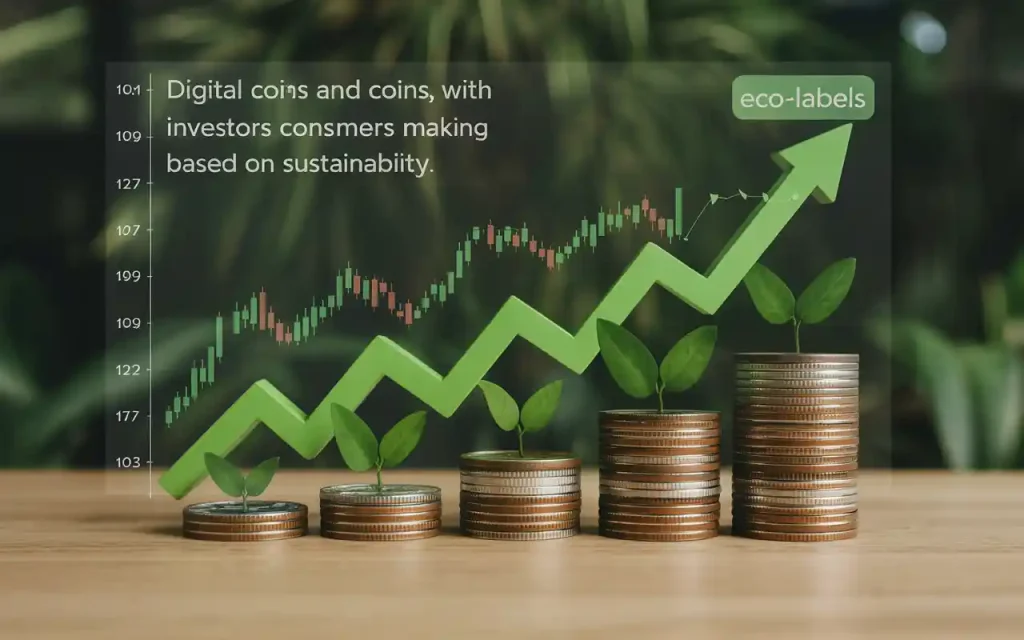The Environmental Debate: Can Crypto Ever Be Green?

INTRODUCTION
Can crypto ever be green? This question is sparking intense debate across the world as cryptocurrencies move from niche technology to mainstream finance. Digital currencies like Bitcoin and Ethereum have revolutionized how we think about money, offering new ways to transfer value, invest, and even build businesses without traditional banks.
But behind the excitement lies a growing concern: the environmental cost of these innovations. Every day, headlines warn about the massive energy use, pollution, and electronic waste linked to crypto mining. Environmental groups, governments, and investors are demanding answers—and action.
The environmental debate is not just about numbers and statistics. It touches on the future of technology, the health of our planet, and the ethical choices facing individuals, companies, and entire countries. As more people and businesses adopt crypto, the pressure to find sustainable solutions grows stronger.

Some believe that with new technology and bold action, crypto can become a force for good in the fight against climate change. Others argue that the industry’s core design makes true sustainability impossible.
This article explores the full picture: how crypto affects the environment, what is being done to make it greener, and whether digital currencies can ever truly align with a sustainable future. By looking at the facts, the innovations, and the ongoing challenges, we aim to answer the urgent question—can crypto ever be green?
Understanding the Environmental Impact

Energy Consumption
- Proof-of-Work Explained
Proof-of-work (PoW) is the original method for securing blockchains and processing transactions. It is powerful but very energy-hungry. Bitcoin miners compete to solve puzzles, and only one wins each round, meaning most of the energy spent is wasted. This causes Bitcoin’s annual energy use to rival that of entire nations. - Global Energy Mix
The source of electricity matters. In some countries, miners use hydropower or wind, but in others, coal and gas dominate. This means the same amount of mining can have very different carbon footprints depending on location. - Hidden Energy Costs
Beyond mining, energy is used to manufacture mining hardware, build data centers, and cool equipment. These indirect costs add to crypto’s total environmental burden.
Pollution and E-Waste
- Air and Water Pollution
When mining is powered by fossil fuels, it releases greenhouse gases and other pollutants. Mining farms also use water for cooling, which can strain local supplies and cause thermal pollution. - Electronic Waste (E-Waste)
Mining hardware, especially ASICs (specialized computers), becomes obsolete quickly. Disposing of these creates toxic e-waste, which is hard to recycle and often ends up in landfills. - Noise and Light Pollution
Large mining farms run thousands of machines 24/7, producing constant noise and bright lights. This can disturb nearby communities and wildlife.
Social and Economic Impact
- Impact on Local Communities
Mining operations often set up in rural or low-cost energy areas. This can raise electricity prices for residents and put pressure on local infrastructure. - Job Creation and Loss
While mining can create some jobs, they are often few and highly technical. In some regions, traditional jobs are lost if mining takes over land or resources. - Inequality in Crypto Wealth
The richest miners and those with the most resources benefit most from proof-of-work systems, leading to further inequality.
Steps Toward a Greener Future

New Technologies

- Proof-of-Stake (PoS) and Beyond
PoS is a game-changer for energy use. Instead of competing to solve puzzles, validators are chosen based on how much crypto they hold and are willing to “stake.” This slashes energy use by more than 99 percent. - Hybrid and Alternative Consensus Models
Proof-of-authority, proof-of-space, and proof-of-burn are being developed and tested. Each aims to balance security, decentralization, and energy efficiency. - Layer 2 Solutions and Scaling
Technologies like the Lightning Network (for Bitcoin) and rollups (for Ethereum) move many transactions off the main blockchain, reducing the energy needed per transaction.
Renewable Energy Solutions

- Mining with Renewables
Some mining operations are relocating to areas with abundant hydropower, geothermal, or solar energy. Iceland and Canada are popular due to cheap, clean power. - On-Site Renewable Generation
Some miners build their own solar or wind farms, reducing reliance on the grid and fossil fuels. - Energy Recycling
Innovative projects use the heat from mining farms to warm greenhouses, swimming pools, or buildings, turning waste into a resource.
Real-World Examples

- Ethereum’s Merge
Ethereum’s switch to PoS in 2022 cut its energy use by over 99 percent, setting a benchmark for the industry. - Green Mining Farms
Companies like Genesis Mining and Bitfarms operate with nearly 100 percent renewable energy, proving it is possible to mine responsibly. - Carbon-Neutral Cryptos
Some new cryptocurrencies are designed to be carbon-neutral from the start, using PoS and offsetting all emissions.
The Role of Regulation and Policy

- Government Bans and Incentives
China banned crypto mining in 2021 due to energy concerns. Other countries, like Norway, offer incentives for green mining. - Carbon Taxes and Reporting
Some regions are considering carbon taxes for miners or requiring public reporting of energy sources and emissions. - International Agreements
Experts suggest that global standards may be needed to prevent mining from simply moving to countries with weaker rules.
Economic and Market Forces

- Investor Pressure
Large investors, including pension funds, are demanding greener crypto options. Some refuse to invest in coins with high carbon footprints. - Consumer Choice
Users are starting to choose wallets, exchanges, and coins based on environmental impact, pushing the market toward greener options. - Corporate Responsibility
Crypto companies are under pressure to publish sustainability reports and set emissions targets.
Challenges and Barriers

- Cost of Transition
Moving from PoW to PoS or renewables requires major investment. Not all projects or miners can afford this. - Technical Risks
Changing consensus mechanisms is complex and risky. Security and decentralization must be maintained. - Resistance to Change
Some in the crypto community value tradition and resist changes that could affect profits or the original vision of decentralization. - Regulatory Uncertainty
Changing rules and unclear policies make it hard for miners to plan long-term investments in green technology.
What Can You Do
- Invest Responsibly
Choose coins and platforms that are transparent about their energy use and environmental policies. - Support Green Projects
Back projects that use renewable energy, PoS, or offset their emissions. - Advocate for Change
Join campaigns for greener crypto, support regulation, and educate others about the environmental impact. - Reduce Personal Impact
Limit your own crypto transactions or use eco-friendly platforms.
The Future Outlook

- Innovation Will Continue
The crypto industry is full of creative thinkers. New solutions for energy efficiency, recycling, and sustainability are emerging every year. - Regulation Will Tighten
As climate concerns grow, more governments will regulate crypto mining. The industry must adapt or risk being left behind. - Green Crypto as a Selling Point
In the future, being green could be a major advantage for cryptocurrencies, attracting more users, investors, and partners.
“The real question is not just can crypto ever be green, but how quickly the industry can adapt to the urgent needs of our planet.”
Notable Quotes
“Can crypto ever be green? This question is sparking intense debate across the world as cryptocurrencies move from niche technology to mainstream finance.”
“The environmental debate is not just about numbers and statistics. It touches on the future of technology, the health of our planet, and the ethical choices facing individuals, companies, and entire countries.”
“Some believe that with new technology and bold action, crypto can become a force for good in the fight against climate change. Others argue that the industry’s core design makes true sustainability impossible.”
“Ethereum’s move to proof-of-stake cut its energy use by over 99%, showing that big changes are possible.”
“The real question is not just can crypto ever be green, but how quickly the industry can adapt to the urgent needs of our planet.”
Highlighted Points
- Massive Energy Use:
Cryptocurrencies like Bitcoin use more electricity than some entire countries, mainly due to energy-intensive proof-of-work mining. - Carbon Footprint:
Much of the energy for crypto mining comes from fossil fuels, resulting in significant carbon emissions that contribute to climate change. - E-Waste Generation:
Mining equipment quickly becomes obsolete, creating large amounts of electronic waste that are difficult to recycle. - Water and Pollution Issues:
Mining farms require huge amounts of water for cooling and can cause air, noise, and water pollution in local communities. - Social Impact:
Mining operations can raise local electricity prices, strain infrastructure, and disproportionately affect vulnerable communities. - Technological Solutions:
New consensus mechanisms like proof-of-stake and proof-of-space dramatically reduce energy consumption compared to proof-of-work. - Renewable Energy Adoption:
Some mining operations are relocating to regions with abundant renewable energy or building their own solar and wind farms. - Regulation and Policy:
Governments are introducing bans, incentives, and carbon taxes to encourage greener crypto practices and limit environmental harm. - Market and Consumer Pressure:
Investors and users are increasingly demanding transparency and sustainability from crypto projects. - Challenges Remain:
The cost of transition, technical risks, regulatory uncertainty, and resistance to change are significant barriers to a fully green crypto industry. - Hope for the Future:
With innovation, regulation, and global cooperation, a sustainable future for crypto is possible—but action is needed now.
Frequently Asked Questions

1. What makes a cryptocurrency “green”?
A green cryptocurrency is designed to minimize environmental impact by using energy-efficient consensus mechanisms like Proof of Stake (PoS) or Proof of Space-and-Time (PoST). These methods use far less energy than traditional Proof of Work (PoW) mining.
2. Why is crypto’s environmental impact a concern?
Most cryptocurrencies, especially Bitcoin, use PoW, which requires massive amounts of electricity. This leads to high carbon emissions, e-waste, and strain on local resources, raising concerns about sustainability and climate change.
3. How do green cryptocurrencies reduce their carbon footprint?
Green cryptocurrencies use renewable energy sources (solar, wind, hydro), energy-efficient hardware, and consensus mechanisms like PoS. Some also purchase carbon credits to offset emissions and aim for carbon neutrality.
4. What are some examples of green cryptocurrencies?
Examples include Ethereum (after its switch to PoS), Chia (which uses Proof of Space and Time), and other coins that prioritize renewable energy and low-energy operations.
5. Can blockchain technology help the environment?
Yes, blockchain can support environmental projects by improving transparency in carbon credit markets, funding clean energy projects, and enabling decentralized climate action through DAOs and tokenized incentives.
6. What role do governments and regulations play in making crypto green?
Governments can encourage greener crypto by setting regulations, offering incentives for renewable energy use, imposing carbon taxes, or even banning energy-intensive mining in certain regions.
7. Are there challenges to making crypto fully green?
Yes. High costs of transition, technical risks, lack of global regulation, and resistance from some miners and communities make it difficult to achieve full sustainability in the crypto industry.
8. How can individuals support greener crypto?
Individuals can choose to invest in or use green cryptocurrencies, support projects with transparent sustainability practices, advocate for better regulations, and reduce their own crypto-related energy use
Conclusion
Can crypto ever be green? The answer depends on technology, regulation, and the choices of everyone involved. The challenges are real, but so are the solutions. With bold action, innovation, and global cooperation, a sustainable crypto future is possible.




